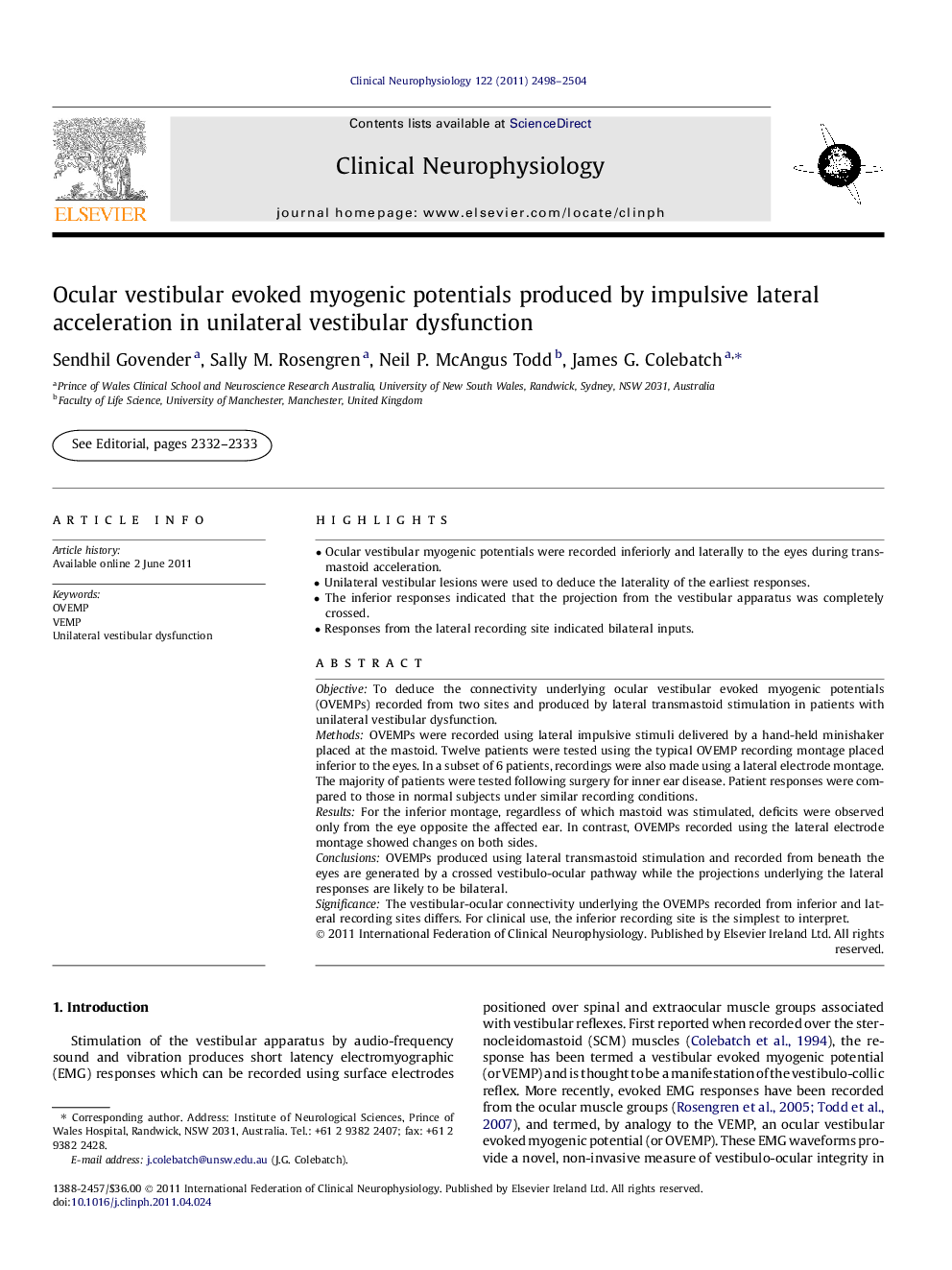| Article ID | Journal | Published Year | Pages | File Type |
|---|---|---|---|---|
| 3043988 | Clinical Neurophysiology | 2011 | 7 Pages |
ObjectiveTo deduce the connectivity underlying ocular vestibular evoked myogenic potentials (OVEMPs) recorded from two sites and produced by lateral transmastoid stimulation in patients with unilateral vestibular dysfunction.MethodsOVEMPs were recorded using lateral impulsive stimuli delivered by a hand-held minishaker placed at the mastoid. Twelve patients were tested using the typical OVEMP recording montage placed inferior to the eyes. In a subset of 6 patients, recordings were also made using a lateral electrode montage. The majority of patients were tested following surgery for inner ear disease. Patient responses were compared to those in normal subjects under similar recording conditions.ResultsFor the inferior montage, regardless of which mastoid was stimulated, deficits were observed only from the eye opposite the affected ear. In contrast, OVEMPs recorded using the lateral electrode montage showed changes on both sides.ConclusionsOVEMPs produced using lateral transmastoid stimulation and recorded from beneath the eyes are generated by a crossed vestibulo-ocular pathway while the projections underlying the lateral responses are likely to be bilateral.SignificanceThe vestibular-ocular connectivity underlying the OVEMPs recorded from inferior and lateral recording sites differs. For clinical use, the inferior recording site is the simplest to interpret.
► Ocular vestibular myogenic potentials were recorded inferiorly and laterally to the eyes during transmastoid acceleration. ► Unilateral vestibular lesions were used to deduce the laterality of the earliest responses. ► The inferior responses indicated that the projection from the vestibular apparatus was completely crossed. ► Responses from the lateral recording site indicated bilateral inputs.
